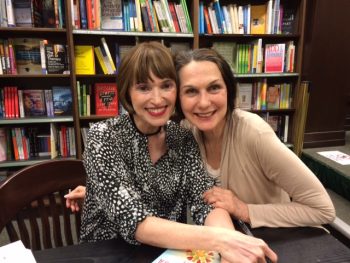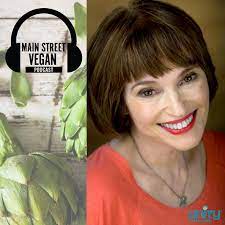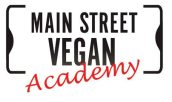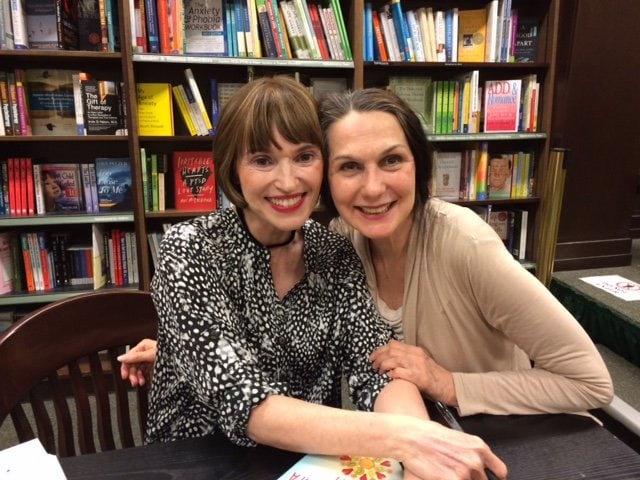by Victoria Moran, CHHC, AADP, RYT-200
posted Feb. 4, 2021

I discovered yoga at seventeen, just out of high school and living in my hometown of Kansas City, Missouri. In those days, yoga was an alien concept to most people, confused with yogurt and meant to be filed away alongside it under “foreign, probably dangerous, best avoided.” So of course it fascinated me.
The books said that ahimsa — non-harming, active compassion — was yoga’s first ethical precept. It meant that I had to be vegetarian, and within two years, I was.
Making it to vegan — full vegetarian, no eggs or dairy products — would take me longer. Yoga supported me on giving up eggs, but it celebrated the consumption of dairy, based on the belief that the sacred cow produced sacred milk. But knowing that a cow has to give birth to make milk, that her baby is stolen from her after a day or two or three, and that both end their abbreviated lives on a slaughter line, made it difficult to juxtapose ahimsa with a grilled cheese sandwich. Then I’d try vegan again. One thing about fits and starts is that, well, you keep making starts.
Once I was comfortably vegan, still practicing yoga for my body and soul but never connecting with the burgeoning “yoga world” of famous teachers and retreats in Bali, the perks proliferated. I felt that I was part of a wave for good, a wave that would help lift humanity to a reconception of kindness as our birthright, and justice for all beings. I learned more about the unspeakable suffering experienced by innocent animals that almost all of us were brought up to believe either didn’t feel or didn’t matter. It was heartbreaking and still is, and yet I no longer needed to run from it because I was doing something to stop it. I felt closer to the Divine because I was doing my best to protect God’s other children.

And although off and on with yoga classes, I attended often enough to see soft, thick mats replaced with thin pieces of sticky rubber, and to witness the emergence of a dizzying display of yoga varieties: ashtanga, anusara, vinyasa, Iyengar, Bikram. Many of the modern gurus, some from India as well as those in the West, cited even vegetarianism as optional. I thought I was a champion of “classical” yoga, until I realized that in simply being a vegan who studied yoga, I had broken from the traditional teachings. I was performing the postures I’d been taught early on, but the “style” I was attempting to live could have a name of its own: vegan yoga, ahimsa yoga, the yoga of compassion.
And I wasn’t alone. Jivamukti was founded by Sharon Gannon and David Life as a way to package vegan values in a yoga milleau, where those values had long ago been conceived as ahimsa. Traditional consumption of dairy sidetracked that somewhat, but ahimsa as a principle was sacrosanct. Notable yoga practitioners, such as Seane Corn and Koya Webb, were turning up vegan. Longtime vegan Carole Baral was authorized by Integral Yoga to rewrite Swami Satchidananda’s book about vegetarianism and health, The Yoga Way: Food for Body, Mind and Spirit, as a fully vegan text. And podcasts such as Yoga Is Vegan with Holly Skodis, and Yogi Triathlete with Jess Gumkowski — both graduates of Main Street Vegan Academy — came on the scene and found their audience.

In keeping with their work and that of so many others, I find myself deeply committed at this point in my life to the yoga of compassion. Staying centered in this idea and practices that support it leads to periods of peace and fulfillment that I refer to as “ahimsa bliss.”
The kind of asana practice, the physical or “exercise” part of yoga, in which you engage is your business. In my opinion you can be a yogi and not have an asana practice at all: just take care of your body’s need for movement some way and get on with yoga’s ethical and spiritual teachings. Vegan yoga has only one hard and fast rule: “Do the most good and the least harm you can to yourself and all others every day of your life. When you fall short, as you will, start over with your very next breath.
The road to ahimsa bliss starts now. If you already study or practice yoga, you have a head start. If you’re vegan or vegetarian or moving in this direction, you have one too. But just as we’re told in yoga class to stay focused on our own presentation of pigeon or crow or camel pose, not someone else’s, focus on your own journey to ahimsa bliss. It’s nothing less than a reflection of the love and caring you’re giving to others by the way you live your life.
Victoria Moran has history: started yoga at 17; went vegetarian at 19; vegan at 33; first book, Compassion the Ultimate Ethic: An Exploration of Veganism, at 35 . . . and became a Registered Yoga Teacher at 70. Some things are worth waiting for.
Check out her contribution to “Moving Towards a Vegan Lifestyle at Home” here.

